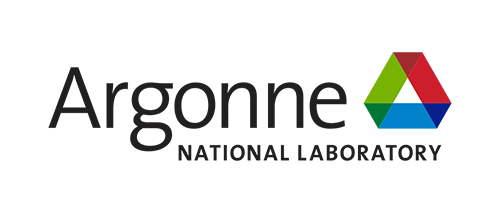November 2022 Edition

Carolyn Tomchik, Nuclear Engineer, NSE
Like many matriculating college freshmen, Carolyn Tomchik did not really know what nuclear engineering was.
“I had a very loose understanding that I might like to figure out how things worked, solve mysteries, and work with my hands,” said Tomchik, a nuclear engineer in Argonne’s NSE division. Her interests were many and varied, but she was drawn to learning about carbon-free sources of energy to power daily life: solar, geothermal, wind and, especially, nuclear. Ultimately, she earned her PhD in nuclear engineering at the University of Illinois at Urbana-Champaign and joined Argonne, where she focuses on the performance of nuclear reactor fuels and structural materials for use in next-generation reactors.
“My work examines the operating limits of various nuclear fuel designs,” she explained. “How much can a material or fuel withstand before it fails? We want to engineer materials that can withstand not only a lifetime of normal reactor operation, but also any accident or abnormal scenario.”
This interest in identifying and overcoming limits translates well to another role Tomchik holds as a co-chair of the AET/NTNS Diversity, Equity and Inclusion Council.
“I have the good fortune that the lab, current events, and social justice are things I am thinking about anyway,” said Tomchik, who does a heavy amount of reflection, planning, and news gathering via podcasts during her 45- to 60-minute drives to and from the lab. “I am not always stealing time from myself. I am thinking about this stuff anyway and asking myself, ‘What can I do to fix things?’”
She gives a lot of thought to ongoing changes and how the lab can continue doing a good job recognizing and addressing inequities when they almost inevitably arise.
“Society constantly changes, circumstances change and new inequities and disadvantages arise,” said Tomchik, who points to the emergence of hybrid workforces as an example of a group that may face rising disadvantages in mentoring or advancement. “It’s important to understand historical inequities, and it’s important that new and worsening disparities get noticed and taken seriously as well.”
She is proud of the example she sets for her children, who are already impressed that their self-described “maker” mom can construct complex Lego or woodworking projects and help combat climate change through work that will expand use of clean, green nuclear power.
“It’s good for them to see me care deeply about things and work to fix things,” she said. “I talk to them about what I care about – a clean and safe environment, a just and equitable society, their safety and happiness – and then I show them that I care enough to do something.”


